It doesn’t seem very long ago that a glovebox full of cassettes and an A–Z map were all you needed for a successful road trip.
But these concepts are a mystery to many children born in the 2010s, who have been left baffled by the classic car gadgets of the 1990s.
This hilarious video shows a group of 12-year-olds trying to navigate a 1992 Toyota Carina E – without much success.
While the children have no difficulty navigating voice-operated controls, Bluetooth pairing, and apps, they are baffled by even the simplest piece of 90s tech.
In the video, they take several minutes to figure out how to unlock the car using a non-electronic key.
When presented with a cassette, one of the children even asks: ‘Is it a floppy disk?’
So, how many of these classic 1990s car gadgets do you remember?
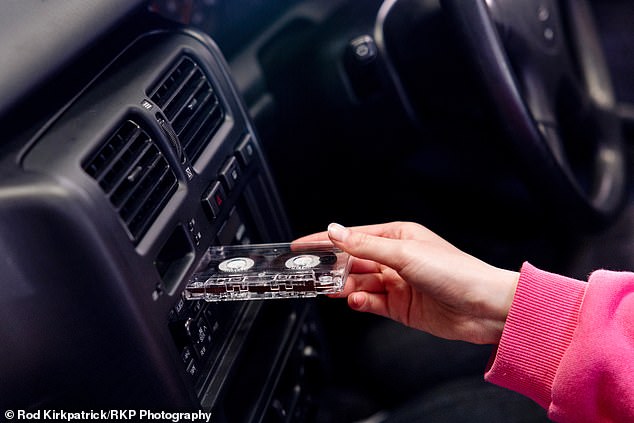
A hilarious video shows how children are baffled by many classic car gadgets such as cassettes
Cassettes
In the video, Toyota asked children of employees at its Burnaston factory to compare the first car made there 32 years ago with a car made at the factory today.
During the review, the children were challenged to see how long it would take for them to put on some music for the drive.
While the children in the modern car had no trouble playing music through their phones, those in the 1992 car found it much more difficult.
The 12-year-olds appear utterly bemused by the car’s old-fashioned music system and didn’t even seem to recognise the cassettes that came with it.
In the video, you can see one of the children attempting to force a cassette into the stereo where it quickly becomes wedged.
However, considering how long cassettes have been obsolete, it’s hardly surprising that the kids seem confused.
Cassettes, for any younger readers, are made up of two tightly wound spools of magnetic tape which can store about 90 minutes of music.
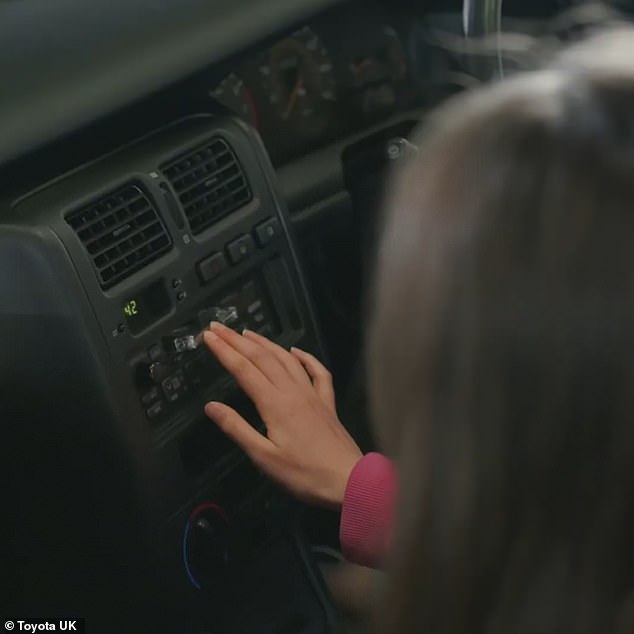
In the video, the children are tasked to play some music in the car. However, they seem utterly confused when presented with a cassette, as one asks: ‘Is it a floppy disk?’
This tape is coated with magnetic particles which are shaped into patterns which the player can read and convert back into music.
The very first car stereo with a tape player, the Phillips Type RN582, went on sale in 1968 but it wasn’t until the mid-70s that they became standard in most vehicles.
By the time the Sony Walkman was released in 1979, cassettes were the go-to music format for almost all listening outside of the home.
But the cassette’s time in the spotlight didn’t last long as CDs began to replace the older, less reliable format during the mid-1980s.
By the 1990s, cassettes were already on their way out as the more reliable digital alternatives took control of the market.
The very last car to be sold with a cassette player installed as standard was the 2010 Lexus SC430.
Considering this car was released two years before the children were born, it isn’t too surprising that cassettes are a little unfamiliar.
A-Z Maps
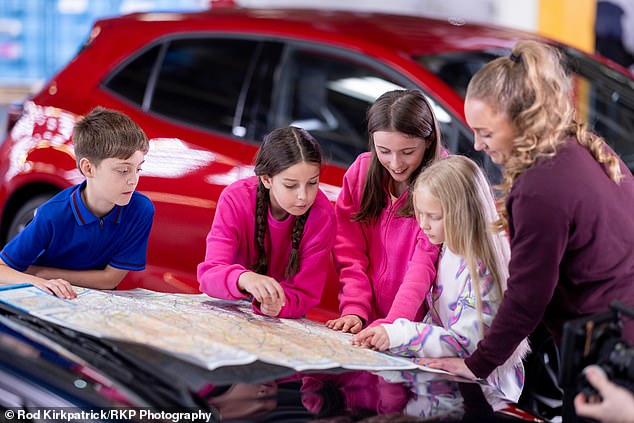
In the 1990s, no car journey would have been complete without consulting the A-Z Map. But the children in this video struggle to use a physical map
Almost anyone who took a road trip in the 1990s will remember the frustration of pouring over a battered A-Z to figure out your route.
But as in-car sat navs and map apps have become more common, many younger people have never had to use a physical map.
In the video, the children are tasked with finding a way to the Alton Towers theme park using an old-fashioned paper map.
As you might expect, the 12-year-olds can hardly open the map, let alone figure out where they are.
While they struggle to get their bearings one child complains: ‘It’s not as if you just type it into a sat-nav.’
The A-Z map, or The Geographers’ A–Z Street Atlas as it is officially known, began production in 1932 and is still available today.
Although it initially was made just for London, the A-Z now has 35 maps covering almost every inch of the UK.
These were a fixture in almost every car until the advent of digital GPS systems.
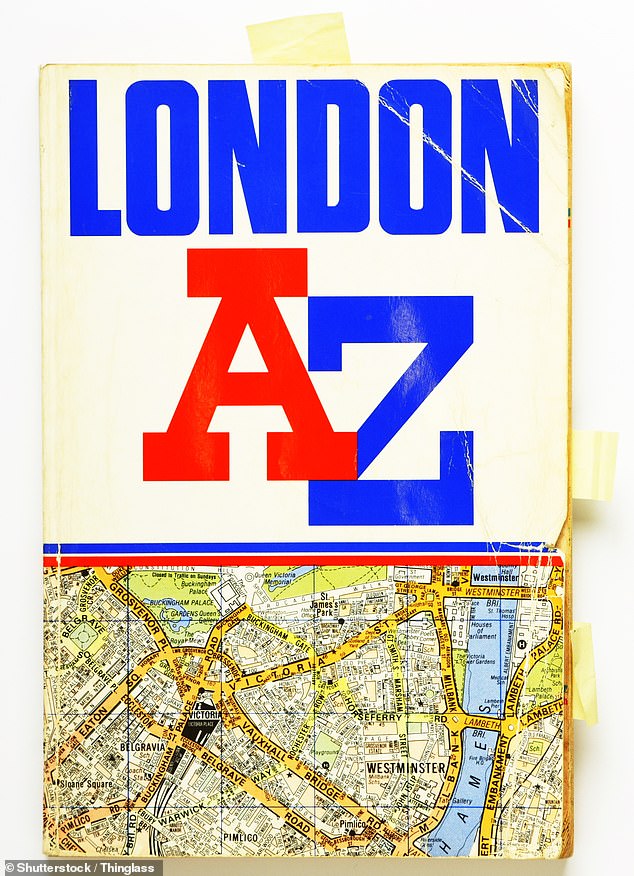
The A-Z was first launched in 1932 and became the most widely sold map in the UK. However, the rise of digital navigation systems in the 2000s led to the eventual decline of the paper map
The very first in-car navigation options first emerged in the 1980s beginning with the Honda Electro Gyro-Cator navigation unit.
These were much simpler than what we would recognise today and used a small helium gas gyroscope to continuously track the car’s direction and speed to calculate the drivers location.
It wasn’t until 1990 with the Mazda Eunos Cosmo that the first true GPS systems became commercially available.
For the first time ever, drivers could now use satellites orbiting Earth to triangulate their location precisely and in real-time.
But the death of the paper map truly came in 2004 when Tom Tom released its first in-car sat nav.
This became one of the quickest-selling commercial electronic devices to date and quickly eroded the need for the A-Z.
By 2012, just around the time the children in the video were born, Google Maps and Apple Maps both appeared on phones and drove the final nail into the coffin for the physical map.
Keys
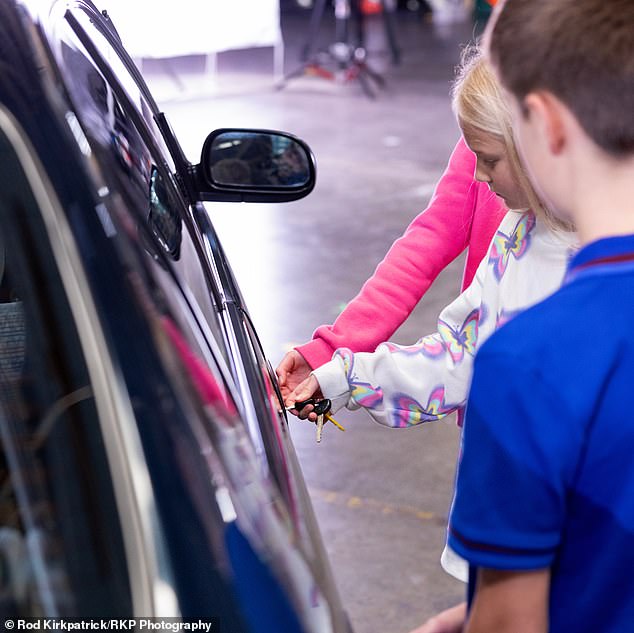
You might think that car keys would be fairly self-explanatory. However, as this video shows, some children are far more used to using apps or electronic keys
Finally, and perhaps most shockingly, the children in the video seem to be quite confused by a simple pair of keys.
While one group are easily able to unlock the modern vehicle using an app, the others struggle for minutes with the physical lock.
Keys are hardly an obsolete technology so it might this might be a bit of a surprise.
However, electronic keys have been around for far longer than you might think.
The first example of a remote lock installed as a default option arrived in 1983 with the Renault Alliance.
Likewise, the first proximity keys, which unlocked the car simply by being near, began to be released at the start of the 2000s.
In 2016, Volvo became the first carmaker to offer an entirely digital key which could unlock doors and start engines using Bluetooth.
At the time, Volvo said that owners would be able to send their keys to friends and family just like they would lend out the keys to their physical car.
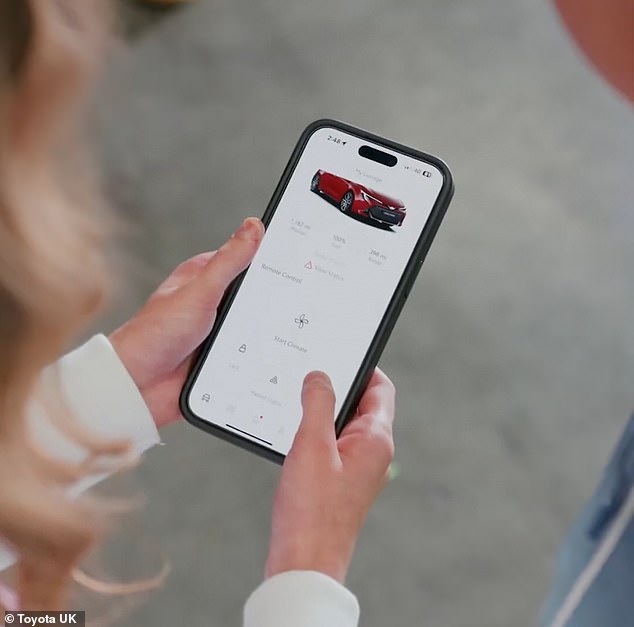
The first digital key launched in 2016 and the technology to unlock and start cars from your phone has since become much more common
Although that hasn’t quite become a reality, app-based locking has become far more common across the industry.
However, there have been some concerns about the security of these apps as they could be vulnerable to hackers.
Either by cloning the signal from your keys or by exploiting vulnerabilities in the app, criminals can fool cars into thinking that the genuine key is nearby.
Cybersecurity experts and police around the country have warned that this could make keyless cars more vulnerable to theft.











